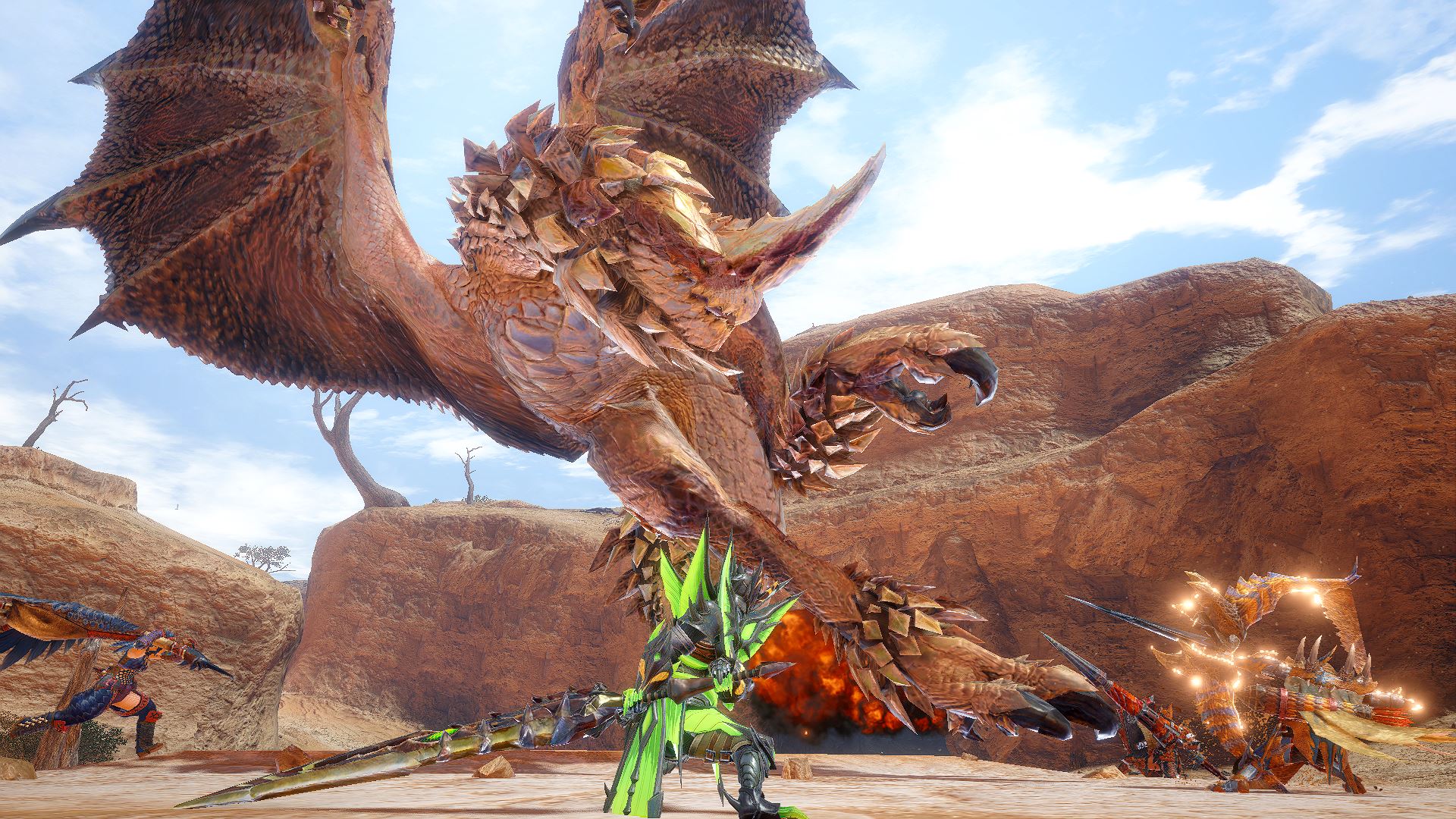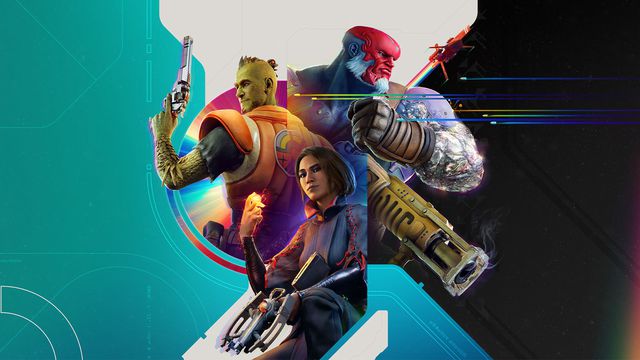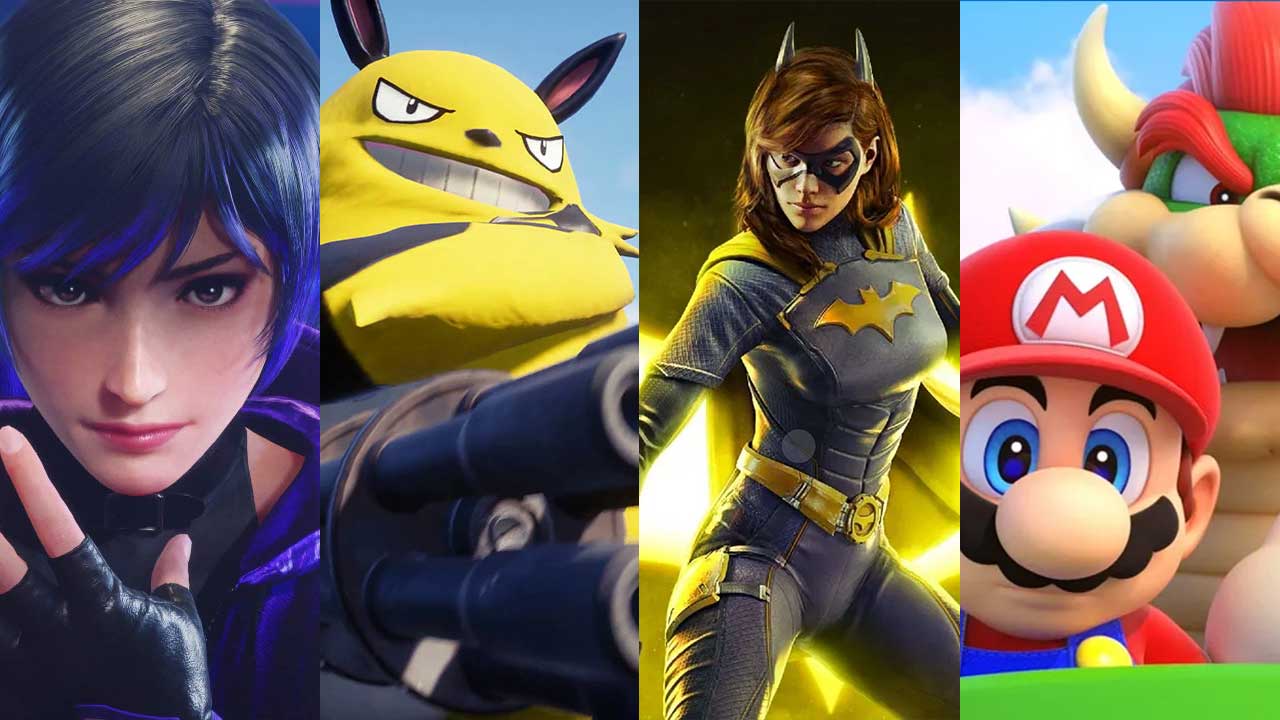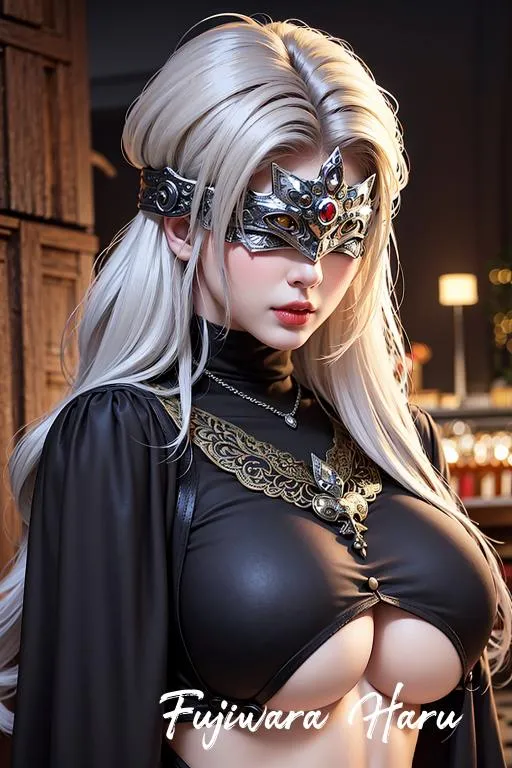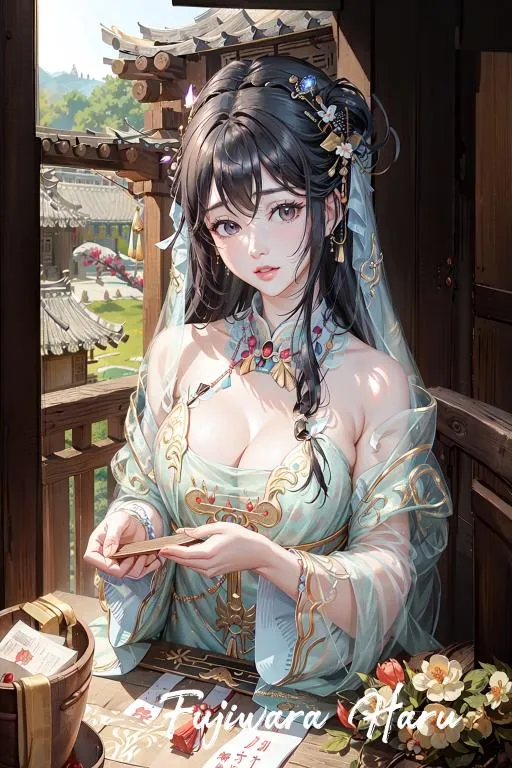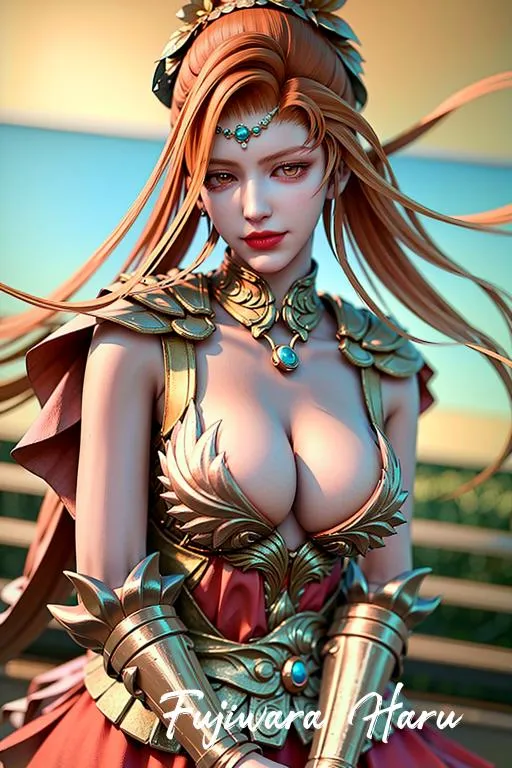30 years ago, an upstart publisher named Image Comics made history when a group of top-selling Marvel artists opted to make the jump to creator-owned comics. It was a game-changing moment for the industry, proving there was real opportunity outside the familiar, corporate-controlled world of Marvel and DC and paving the way for modern best-sellers like The Walking Dead and Saga. And now Image is behind another major creative shake-up, as former DC Chief Creative Officer Geoff Johns and a murderer's row of creative talent spearhead a new publisher called Ghost Machine.
What is Ghost Machine, and why is it one of the most significant developments in the industry since the original formation of Image? To learn more, IGN spoke to Johns and many of the other creators behind this new venture. Read on to learn more about this ambitious undertaking.
What Is Ghost Machine?
Ghost Machine is perhaps best compared to Robert Kirkman and David Alpert’s Skybound Entertainment. More than just an imprint of Image Comics, it’s a full-fledged publishing company centered around creator-owned comics. Ghost Machine’s founders include some of the biggest names in the industry, including Johns, Jason Fabok, Gary Frank, Bryan Hitch, Lamont Magee Francis Manapul, Brad Meltzer, Peter Snejbjerg, Peter Tomasi and Maytal Zchut. These creators will be exclusive to Ghost Machine going forward, meaning fans won’t be seeing more work from the likes of Hitch, Frank and Fabok in the Marvel or DC Universes for the foreseeable future.
The creation of Ghost Machine brings to mind the initial formation of Image Comics in 1992. At the time, artists like Todd McFarlane, Rob Liefeld and Jim Lee were breaking industry sales records on books like Spider-Man and X-Men, but they opted to leave the safe harbor of Marvel Comics to focus on spearheading their own publishing company. Image Comics quickly thrived and weathered the storm caused by the industry crash of the mid-’90s, and has now become the home for a new generation of creators looking to make a living telling their own stories.
“We had done so much stuff at DC and enjoyed all of it, had a lot of fun and we're really proud of the work we did there and it was fantastic, but we just felt like we wanted to do something new and creator-owned,” Johns tells IGN. “[Publisher] Eric Stephenson at Image had been asking me for a long time if I'd be interested in doing something over there, and I always was inspired by Image. I grew up with Image, like Spawn and Savage Dragon and all those books and the excitement of that. Image really held a special place in my heart, and I know all the other creators felt the same.”
Johns and Frank initially tested the creator-owned waters with 2021’s Geiger, a limited series set in a post-apocalyptic US. At the time, Geiger was published under Johns’ Mad Ghost Productions banner. After the initial success of Geiger, Johns and Frank began meeting with other creators and brainstorming a much larger creator-owned venture. That’s how Ghost Machine was born.
“The conversation started probably about two years ago, and then the last year or year and a half is when we really got serious about building it and everybody came on board and we spent a lot of time going through every aspect of what the business would look like, how it would work,” Johns says. “We've all got a lot of experience in all types of businesses, publishing and media and games and merchandise. We've all touched these different businesses and so bringing all that experience together and that passion together and working with people to build a business plan that made a lot of sense and also was an evolution of other creator-owned initiatives. It was really the first of its kind.”
“Especially as an artist, I feel like a lot of comic books is every man for themselves in a way,” Fabok says. “And one of the things that I know that Gary could probably attest to with working with Geoff is Geoff is all about collaboration. Coming together, each person has their strengths and so let's play to those strengths. Let's work as a team. And one of the things that's really great about Ghost Machine and what we've accomplished here with building this group of people that are working on these books is we found that true.”
“You want collaboration with the people you respect and trust, but also with creative freedom,” adds Johns. “You need control. You need business control too. You can't have true creative control without business control, which is something that I think we learned over the course of our careers, and why Ghost Machine exists. It’s because it's something as simple as we want to be able to say when the books are coming out because we're ready. We want to be able to say how many pages a story is. We want to be able to pick the highest paper quality and cardstock covers and - it's more expensive? Well, we're okay with that. We want the best quality for these books.”
Ghost Machine features several interconnected comic book series, but the company isn’t built around a single shared universe akin to Marvel or DC. Rather, the initial lineup of books is divided into four distinct universes - the Unnamed Universe, the Rook: Exodus Universe, the Family Odysseys Universe and the Hyde Street Universe. These four universes are introduced in the pages of the introductory special Ghost Machine #1, which is in stores now. As the founders explain, there was initial talk of focusing on one shared universe, but it ultimately made more sense not to pigeonhole the books.
“There's little opportunities to play and have fun with the fact that we're creating this universe and these characters and put them all together and have them interact. And maybe people would speculate if this took place in this universe,” Fabok says. “But I think in the end, we discussed from the beginning that we wanted to tell the best stories possible. And so if that story could fit in with let's say the Unnamed Universe, then let's do it. That would be great, but maybe it doesn't fit in with anything, so why shoehorn it in? Let's just make it its own thing and go with it. We've done that with our books at DC. Three Jokers is in continuity, but it takes place out of continuity at the same time. So we could just tell the story that we wanted to tell.”
“When we were creating these books, it was like, okay, well the story of Redcoat and Geiger, they do interact and intersect in the terms of this historical timeline that is The Unnamed, these mythical American-based heroes like Paul Bunyan and John Henry and where you've just never heard their legends and their myths told, and that's what this is sprung from,” Johns says. “Whereas Rook is totally different, it's not just about continuity, but it's about tone. Rook is a sci-fi, sprawling sci-fi nature versus technology story about this guy that's reconciling his own self in life in this big world. And then you've got Family Odysseys with Rocketfellers and Hornsby and Halo that's very family-based sci-fi… And then Hyde Street is horror. So everything's really based on tone, and that's why we set out with Ghost Machine #1 to have these four separate sections, four separate universes, to allow the books and the characters to just be what they can be to the best they can be. And again, all that said, we're part of the same company, so we can do whatever we want ultimately with these characters and their interactions.”
Geiger and Redcoat: The Unnamed Universe
The Unnamed Universe is the only one out of these four that was established prior to the announcement of Ghost Machine. 2021’s Geiger introduces a near-future version of the US ravaged by nuclear war. In this Mad Max-esque landscape, a wandering hero named Tariq Geiger (known to most as “The Glowing Man”) is all that remains to defend the innocent from scavengers, Las Vegas’ warlords and the ruthless remnants of the US government. Despite this being a continuing story, Johns reassures readers that the new volume will be readily accessible to newcomers.
“Obviously, there's only been a handful of Geiger issues beforehand, so it's going to be new reader-friendly no matter what, but you meet the Glowing Man, the legendary, mythic, Glowing Man as he's on a trek to do what he does,” Johns says. “He's not looking for trouble, but when trouble finds him, he has no problem taking care of it. He's a man caught between a life of peace and a life of violence. And I think that's his internal struggle - in a world that's so toxic, does he have to be toxic back? That's really where the book starts and there's a character that he interacts with that leads him on a new quest by the end of the first issue, which we won't spoil, but we tease a little bit in Ghost Machine #1.”

As Frank explains, as much as Geiger is steeped in post-apocalyptic sci-fi elements, the series actually leans heaviest on another popular American genre - the Western.
“When we started the first series, we were touching on the things which were going to influence it. And we kept coming back to Westerns,” Frank says. “We talked a lot about True Grit, Rooster Cogburn and everything, that figure that was very much where the story was. So the Western influence is very strong. Although it's ostensibly a sci-fi thing and it’s set in the future, we are always coming back to that. That's like a visual touchstone, but everything's peppered with remnants of technology. So it's the old West, but with just the fossilized remains of civilization under the surface.”
Geiger is still a new story starring a protagonist who’s only begun to reveal his layers. And for Johns, that’s what makes this project so exciting - the freedom to paint on a broad, blank canvas.
“I love, obviously, Batman and Green Lantern and all the characters that we've all worked on forever, but there's so much to them, so many versions, so much history, so much everything,” Johns says. “And there's a lot of it. You know Batman's going to fight the Joker and the best you can do - Jay and I - hope to tackle something new through that with the Red Hood and Barbara and Bruce and scars and trauma and all that. You hope to tackle something new emotionally. This is new on every single level, and I think that that's made it feel so different for me. It's not straight superheroes, it's just stories and characters. And it's coming from a very personal place for each one of us, because all these ideas started with a conversation just about life. And then we do the fun stuff we always do is we take that initial spark and we make it into something visually spectacular and hopefully emotionally very engaging and intriguing and surprising and shocking and all the things great stories do.”
The Unnamed Universe is built around a group of characters called the Unnamed - mythical figures from throughout US history whose deeds become legend. That lineup includes both familiar American folk heroes like Johnny Appleseed, Davy Crockett and Annie Oakley as well as original creations like Geiger and the robotic soldier Junkyard Joe. Ghost Machine #1 introduces another member of the latter category, the immortal mercenary Redcoat. Redcoat is a collaboration between Johns and Hitch, and Johns reveals that the character Simon Pure is very directly influenced by Hitch himself.
“The actual character, Simon Pure, his personality is a hundred percent from Bryan, just talking to Bryan Hitch and Gary and Jay will, when they see Simon, they'll hear Bryan's voice in him so much. We all know Bryan so well at this point. And it really developed from just a point of it's both sincere about how crazy life is and also the ridiculous of how crazy life is. But it came from a conversation he had about just - will I ever learn from my mistakes? And we started talking about just how long would it take for someone to actually learn to change? And if you live 300 years, would you change?”

“History has been a subject of interest for me for a very long time,” Hitch says. “It’s not just the fascinations of places, people and worlds we don’t live in anymore (my own childhood in the 70’s feels like a period drama now) but how we use that to build amazing, rich and immersive worlds to drop characters into for adventures. Film and TV have been doing that for a long time. I was as hooked by the works of Conan-Doyle and Burroughs as I was Siegel and Shuster. Periods of history, past, alternative or imagined, speculative futures are always a terrific playground anyway. Dropping an Englishman into all that alternative American magical mythology is just rife with great opportunity.”
That said, Hitch assures readers that Redcoat is anything but a dry, grounded account of American history.
“We’re not making an historical documentary here anymore than Spielberg was with Indy or the Pirates of the Caribbean movie was. It’s character-led, action-adventure all the way and I can bring all my long-practiced world-building and rich detail to try and build something fresh and exciting.”
The final pillar of the Unnamed Universe is First Ghost, a supernatural thriller written by Meltzer and set in a present-day, pre-apocalypse White House. Johns promises that the series has an important part to play in fleshing out the scope of the Unnamed Universe.
“I can only say that Brad and I have been working on that for a long time, and we can't really say much more about it except that the president we introduced in Ghost Machine #1 does factor in heavily to the mythology of the Unnamed.”
The Rook: Exodus Universe
Rook: Exodus serves as the long-awaited reunion between Johns and Fabok following their DC collaborations like Justice League: The Darkseid War and Batman: Three Jokers. The series is set on an alien world in the far future where a group of characters called Wardens wear helmets that allow them to control animal life. The main character, Rook, controls birds, and he faces a choice between finding a way off of his dying planet or staying and fighting to save it.
“I was so blown away by Geiger and I loved that series, and it really got me excited about the possibilities of what could be accomplished with brand-new books and brand-new characters,” Fabok says. “Geoff and I really started to talk about that and we were really getting excited about things like the original Image Comics launch with Spawn and Savage Dragon and Wildcats and all the Extreme Studio stuff and just how exciting that time period was.”
Fabok continues, “I was barely even reading comics at that time, but seeing the excitement of that through Wizard Magazine and all this stuff, as I was growing older, I really yearned for, I wanted to be a part of something like that. And so as we were talking about ideas, Rook was one of these characters that I had been drawing for years and years and years, and I pitched something to Geoff and he said, ‘Well, let me go and think about this.’ And he came back the next day and had just this whole universe laid out and this great hook with these helmets and these characters, and you really know when you've landed on something when you're just brainstorming and just everything you're throwing out just sounds so awesome. And you're like, ‘Write that down. Write that character down.’”

If Geiger is particularly inspired by classic Westerns like True Grit, then Rook: Exodus shares an equally unexpected influence - ‘80s cartoons. Fabok points specifically to He-Man and the Masters of the Universe as a major source of inspiration for the series.
“Rook feels, in our minds, it feels like a Saturday morning cartoon from the ‘80s in a lot of ways,” Fabok says. “You've got people with helmets that look like animals. It's a little on the nose, it's a little, if you went too far one way, it could be really cheesy. So there's got to be a balance, but at the same time, you got to embrace some of that stuff too.”
Fabok continues, “We're both big He-Man fans, and He-Man just wore it on the sleeve. It was a guy literally called Fist-O, who has a giant fist, right? It's Ram-Man and Mer-Man, and it's right there in your face. And so originally I wanted the designs to be way more subtle, but then after a while it's like, okay, if the character is a giant bear, let's make a guy with a bear helmet. Let's make the guy look like a giant bear mixed with a warrior viking mixed with a little bit of sci-fi, and create a visual language out of that.”
Johns adds, “It does have the fun of maybe an ‘80s cartoon, but it also has, I think, the emotional weight of comics and storytelling today and the individual personal inspiration of our connection with animals and what that is. And then it's wrapped up in a gorgeous, insane, both very organic world and very technology-based world, which was by design. We really wanted a world to have a lot of trees and a lot of forests and it had cities and it had vehicles and it has tech, but there's a lot of unexplored territory, lush territory throughout Exodus that's important to have. We wanted it to feel like it was on our planet as much as we could.”
The Family Odysseys Universe
The third Ghost Machine universe is a significant departure from the first two. Family Odysseys is much more all-ages in tone than the bleak worlds of Geiger and Rook: Exodus. This universe will initially consist of two books - The Rocketfeller Family (written by Tomasi and drawn by Manapul) and Hornsby and Halo (written by Tomasi and drawn by Snejbjerg).
“I often seek variety in the type of books I work on and the Rocketfellers came out of a desire to tell stories about family,” says Manapul. “So, when Pete and I started talking about what kinda book we'd like to collaborate on (knowing Pete's back catalogue) creating something like The Rocketfellers came naturally. I also think the audience for these types of stories have been underserved, we're hoping to change all that.”

Manapul continues, “The Rocketfellers are inspired by people much closer to Pete and I, and are plucked from the non-fictional world of our lives. I love the way my kids approach the world with such wonder and that was something I wanted to capture in our book. Pete and I are also crafting the story to work on multiple levels so they can be enjoyed by both the parents and their kids. Even if you don't have kids I think you'll enjoy the adventures we have in store for this time-displaced family.”
“I think just Pete has done such great work on Superman and Super Sons and Batman and Robin - that family dynamic, father and son, he really loves it,” Johns says. “And Francis' art obviously is gorgeous, but Pete's diving into the Rocketfellers and Hornsby and Halo, and they explore families, they explore the family dynamics, and again, there's a little nostalgia, a little throwback to Hanna-Barbera and Pixar, but yet firmly rooted in modern-day storytelling and sensibilities. Even the Rocketfeller stories, I love that it was all about the time people spend on screens individually as opposed to a family. I love the ending of that story, that ending where he says, ‘At least we're all watching the same screen.’ I love that story. So it's such a great story and it's told so efficiently, but to me, and it only could be told with the Rocketfellers, but yet it's entirely relatable to everybody that has anyone in their life and hangs out.”
The Hyde Street Universe
The fourth Ghost Machine universe may just be the darkest of the bunch. Hyde Street is a full-blown horror universe that centers around the titular supernatural street. As Reis teases, “There are endless possibilities with Hyde Street. In every city in the world, there is its own version of Hyde Street with its stories and universe interconnected . Anything can and will happen on Hyde Street... even in the Hyde Street of your town.”

Hyde Street marks a return to horror for Reis, who made his debut working on horror comics and famously collaborated with Johns on 2009’s “DC meets zombies” crossover Blackest Night. For Reis, Hyde Street offers a welcome opportunity to return to his roots as an artist.
“With Blackest Night, I had to restrain myself because it was also about a superhero story, so it was important to maintain a balance between the two genres,” Reis says. “Today, I am an artist with more experience and Hyde Street is something that is liberating and challenging. It's a blend of horror, suspense, and fantasy. It's like The Twilight Zone with Blackest Night, but without worrying about the superhero. I'm really excited.”
Readers can get a taste of all four universes in the pages of Ghost Machine #1, which is in stores now. Geiger #1, Redcoat #1 and Rook: Exodus #1 will all debut in April, with more Ghost Machine series to follow over the course of 2024.
In other comic book news, IDW has revealed the star-studded creative lineup behind the TMNT relaunch, and Skybound has revealed a dramatically different origin story for Cobra Commander. And be sure to check out IGN's most anticipated comics of 2024.
Jesse is a mild-mannered staff writer for IGN. Allow him to lend a machete to your intellectual thicket by following @jschedeen on Twitter.



